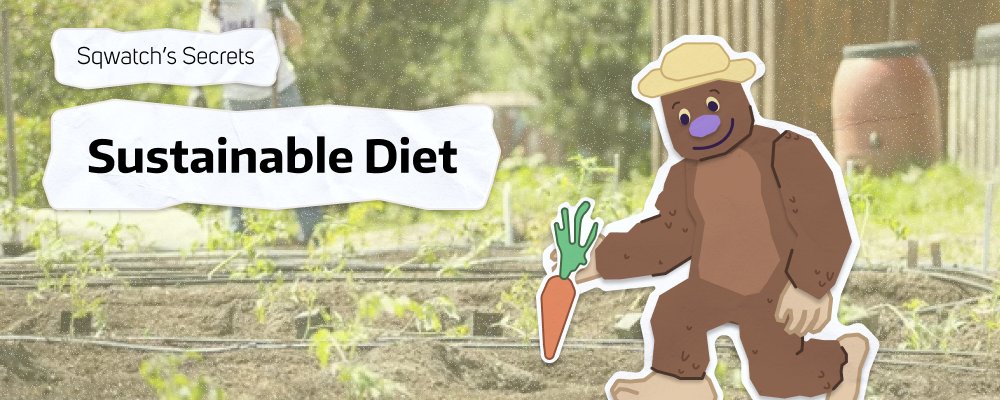
When thinking about sustainability and food, it's important to think about how the food was produced. Food production and transport can be a significant contributor to climate change through greenhouse gas emissions, while increasing temperatures and changing weather patterns can disrupt the production and availability of food.
It is important to move towards a sustainable diet when possible, but it may be difficult to know where to start. A sustainable diet does not only mean being conscious of the environment, but also making choices that promote your own health and economic stability. Below are some tips on how to begin thinking sustainability when nourishing your body.
- Cut out meat when possible. The resources put into farming animals and dairy has a significant environmental impact. Choosing to eat plant based when possible is a simple way to reduce your individual footprint.
- Tero at Local Point is a great option on campus that offers sustainable, plant based dining options.
- Don’t know where to start? The UW Food Pantry offers several recipe ideas, and here are some other great suggestions.
- Buy & eat local. Buying locally tends to have a smaller environmental impact due to reduced transportation costs and it also supports our local economy. If you shop at a farmer’s market you can even cut out the middleman and buy directly from the people producing your food.
- The U-District Famers Market is year-round on Saturdays. On the first Saturday of every month, show your Husky Card for a $2 voucher.
- Buy in season. Beyond being fresher and tasting better, buying food in season is often cheaper and has a higher nutritional value, while also requiring less additives to be grown.
- Buy bulk. When buying bulk you can reduce the amount of packaging you buy, while saving your money and time. Dry foods are especially good to buy in bulk.
- Don’t know where to find bulk foods? Check out the Bean Basket next to By George Cafe.
- Grow your own food when possible. If you have access to a backyard choose a sunny spot and pick up some seed packets to plant. Try starting with something easy, like lettuce or radishes. For more tips for growing in Washington, see these resources from WSU Extension.
- Even if you live in an apartment, you can still grow food! Try growing smaller plants on your windowsills or balconies, like herbs and greens.
Still struggling on where to start? Check out Eat Local First, a Washington-specific tool that helps with identifying local farms, stores, restaurants and more!
Learn more:
- Climate Change, Global Food Security, and the U.S. Food System (U.S. Dept. of Agriculture)
- Information from a workshop on sustainable diets, food and nutrition - featuring Adam Drewnowski of UW
- Eight Tips for Eating for the Planet (WWF)
- Dietary guidelines and sustainability (Food and Agriculture Organization of the United Nations)